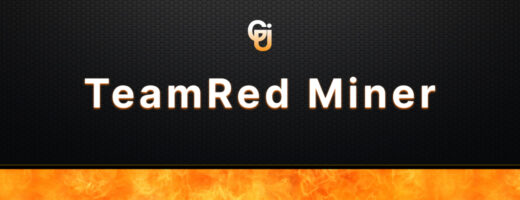- About Z-Enemy Miner
- Download Z-Enemy Miner
- Installation of Z-Enemy Miner: Steps and Recommendations
- Specific Settings for Z-Enemy Miner
- Supported mining algorithms and commission fee.
- Performance Optimization: Useful Tips for Z-Enemy Miner
- Example of connecting to mining pools using Z-Enemy Miner:
- Why use Z-Enemy Miner: Program advantages
- Solution to Common Issues and Frequently Asked Questions about Z-Enemy Miner
- Latest Releases and Updates: What’s New?
- Z-Enemy Miner v2.6.2
- Z-Enemy Miner v2.3
- Z-Enemy Miner v2.2
- Z-Enemy Miner v2.00
About Z-Enemy Miner
In the realm of cryptocurrency mining, behold the Z-Enemy Miner! This trustworthy software has been meticulously designed for graphics processing units (GPUs). The team of developers constantly strives to enhance mining performance and efficiency.
Z-Enemy Miner supports a wide range of algorithms, including Equihash, X16R, X16S, X17, Cuckaroo29, and many others, showcasing its versatility and offering numerous cryptographic possibilities.
Fear not, for the Z-Enemy Miner software has been carefully tailored to be compatible with powerful NVIDIA and AMD GPUs. It provides various optimizations and settings that help maximize mining performance on your hardware.
Download Z-Enemy Miner
Installation of Z-Enemy Miner: Steps and Recommendations
Step 1: System Preparation Before installing Z-Enemy Miner, ensure that your machine meets all the necessary requirements. Check if the latest versions of drivers for your graphics card are installed. Also, verify that your operating system is up to date and has all the necessary packages and components.
Step 2: Download the latest version of the software that corresponds to your operating system. Pay attention to the version and choose the correct option for your system.
Step 3: Extracting the Files After downloading the program, extract the files to a convenient location on your hard drive. You should have a folder containing the miner executable file and possibly some auxiliary files or scripts.
Step 4: Configuring the Miner Before running the miner, edit the configuration file, usually named “config.txt” or similar. In this file, you can set mining parameters such as pool address, port, username, password, and other important settings. Make sure you provide the correct values according to your preferences and your mining pool requirements.
Step 5: Launching the Miner Now that you have prepared the system and configured the miner, you can launch it. Run the miner executable file and follow the instructions. You will usually be prompted to enter the pool address, username, and password. After entering these details, the miner will start the mining process on the selected algorithms.
Recommendations:
- Before installing the miner, ensure that you download it from an official source to avoid counterfeits and malware.
- Regularly check the official website or miner community to stay updated on the latest updates and bug fixes.
Specific Settings for Z-Enemy Miner
The settings for Z-Enemy Miner will vary depending on your specific needs and system configuration. However, I can provide you with some general recommendations to configure the miner:
- Mining Algorithms: It’s important to select algorithms that align with your goals and are supported by your graphics cards. Z-Enemy Miner offers support for various popular algorithms like Equihash, X16R, X16S, X17, Cuckaroo29, and more.
- Intensity: Adjusting the mining intensity is crucial to ensure optimal performance and stability. You can start with a lower value, such as 18 or 20, and gradually increase it until your system remains stable without any issues.
- Memory Load: Sometimes, optimizing the memory load can enhance the overall performance of the miner. The optimal value may vary depending on the specific algorithm used. It is recommended to experiment with different values and choose the one that works best for your system.
- Power Management: Personalizing the power management settings for your graphics cards allows you to have more control. This can include power limiting, adjusting core and memory settings, and other relevant configurations. To determine the optimal settings, refer to the documentation provided with your graphics card and conduct thorough testing.
- Monitoring and Optimization: Regularly monitoring the performance of the miner is essential. Utilize monitoring tools to keep track of important metrics such as temperature, load, and hash rate. If you encounter any issues or instability, consider making appropriate adjustments to the miner or hardware settings.
Remember, these recommendations are general guidelines, and it’s crucial to fine-tune the settings based on your specific hardware and mining requirements. Experimentation and customization will help you achieve optimal results.
Supported mining algorithms and commission fee.
| Algorithm | Commission Fee |
|---|---|
| KAWPOW | 1% |
| Aergo | 2% |
| Bitcore | 1.5% |
| Bcd | 2% |
| X16R | 1% |
| x16rv2 | 1.5% |
| X16S | 1% |
| X17 | 1% |
| C11 | 1.5% |
| Phi | 2% |
| PHI2 | 1.5% |
| Tribus | 1% |
| Poly | 2% |
| Skunk | 1.5% |
| Sonoa | 2% |
| Hex | 1% |
| Timetravel | 1% |
| Xevan | 1.5% |
Performance Optimization: Useful Tips for Z-Enemy Miner
- Keep your drivers up to date: Ensure that you have the latest drivers installed for your graphics cards. Updated drivers often include performance improvements and bug fixes that can enhance the mining performance of Z-Enemy Miner.
- Experiment with intensity settings: Adjusting the intensity setting can significantly impact mining performance. Start with a moderate intensity level and gradually increase or decrease it to find the optimal setting for your hardware configuration.
- Optimize memory usage: Depending on the algorithm you’re mining, adjusting the memory load can improve performance. Experiment with different memory settings and monitor the hashrate to find the best balance for your system.
- Cooling and temperature management: Proper cooling is essential for maintaining optimal performance and preventing overheating. Ensure that your mining rig is adequately cooled, and monitor the temperature of your graphics cards to avoid performance throttling.
- Power management: Efficient power management can contribute to better mining performance. Adjust power limits, core clocks, and memory clocks to optimize power consumption without sacrificing hashrate.
- Mining pool selection: Choosing the right mining pool can impact your overall mining performance. Consider factors such as pool fees, payout schemes, and server location when selecting a mining pool for Z-Enemy Miner.
- Regular monitoring and maintenance: Keep a close eye on the performance of your mining rig. Monitor key metrics such as temperature, hashrate, and power consumption regularly. Perform regular maintenance tasks such as dusting off components and ensuring proper airflow to optimize long-term performance.
Remember, performance optimization is a continuous process. Don’t be afraid to experiment with different settings and monitor the results to find the best configuration for your specific hardware and mining goals.
Example of connecting to mining pools using Z-Enemy Miner:
- Start by opening the Z-Enemy Miner configuration file, typically named “z-enemy.cfg” or “config.txt”. You can find this file in the folder where the Z-Enemy Miner program is located.
- In the configuration file, locate the section titled “Pool Settings” or “Mining Pools”. In this section, you will specify the connection parameters for the mining pools.
- Add the following parameters for connecting to a pool:
- “URL” or “Stratum”: Specify the pool’s address you want to connect to. For example, “stratum+tcp://pool.example.com:port”.
- “Username” or “Worker”: Specify the username or worker name you registered with on the pool.
- “Password”: Specify the password for your user or worker, if required.
- Repeat step 3 for each pool you want to connect to. You can add multiple sections with parameters for different pools.
- Save the configuration file after making all the changes.
- Launch Z-Enemy Miner, and it will automatically connect to the specified pools. You will see connection information and mining status in the program window.
Remember that each pool has its own instructions and configuration requirements. Consult the pool’s documentation and guides for more detailed instructions on connecting and configuring with Z-Enemy Miner.
Why use Z-Enemy Miner: Program advantages
- Enhanced Performance: Z-Enemy Miner is specifically designed to optimize mining performance, allowing you to maximize the efficiency of your mining operations. The software is constantly updated by a dedicated team of developers who work to improve its performance and ensure compatibility with the latest algorithms and hardware.
- Wide Algorithm Support: Z-Enemy Miner supports a wide range of mining algorithms, including popular ones like Equihash, X16R, X16S, X17, Cuckaroo29, and more. This versatility allows you to mine various cryptocurrencies using the algorithms that best suit your preferences and hardware capabilities.
- NVIDIA and AMD Compatibility: Z-Enemy Miner is optimized to work efficiently on both NVIDIA and AMD graphics processing units (GPUs). This cross-compatibility ensures that you can utilize the software regardless of the GPU brand you are using, providing flexibility and accessibility.
- Customization and Settings: The program offers a range of customization options and settings that allow you to fine-tune your mining experience. You can adjust parameters such as intensity, power management, and memory load to optimize performance and tailor it to your specific hardware and preferences.
- Regular Updates and Support: The developers of Z-Enemy Miner are actively involved in maintaining and updating the software. They provide regular updates to enhance functionality, improve performance, and address any potential issues. Additionally, there is typically a supportive community around the program that can provide assistance and guidance if needed.
- Stability and Reliability: Z-Enemy Miner is designed to provide a stable and reliable mining experience. By utilizing advanced optimization techniques and continuously improving the software, it aims to minimize crashes, errors, and other disruptions during mining operations.
Remember that the advantages mentioned above are general benefits associated with Z-Enemy Miner. It’s important to consider your specific mining setup, hardware, and the compatibility of the software with the cryptocurrencies and mining pools you intend to use.
Solution to Common Issues and Frequently Asked Questions about Z-Enemy Miner
- Low Hashrate or Performance Issues:
- Ensure that you have the latest drivers installed for your graphics card.
- Adjust the mining intensity in the configuration file to find the optimal value for your hardware.
- Check the temperature of your GPU and make sure it’s not overheating.
- Verify that your power settings are optimized for mining and not set to energy-saving mode.
- Experiment with different mining algorithms to find the ones that work best with your hardware.
- Connection Problems:
- Double-check the pool settings in the configuration file, including the URL, username, and password.
- Verify that your internet connection is stable and not experiencing any disruptions.
- Make sure the pool you are trying to connect to is online and operational.
- Check if there are any firewall or antivirus settings blocking the connection. Add exceptions if necessary.
- Program Crashes or Errors:
- Update Z-Enemy Miner to the latest version, as newer releases often include bug fixes and stability improvements.
- Ensure that your system meets the minimum requirements for running the software.
- Check if any other mining software or conflicting applications are running simultaneously and causing conflicts.
- Temporarily disable any overclocking or undervolting settings to see if they are causing instability.
- Frequently Asked Questions:
- Q: Can I use Z-Enemy Miner with multiple GPUs? A: Yes, Z-Enemy Miner supports multi-GPU setups. Make sure your system and drivers are configured correctly to recognize and utilize all GPUs.
- Q: Does Z-Enemy Miner support dual mining? A: Z-Enemy Miner does not natively support dual mining. It focuses on optimizing performance for single algorithm mining.
- Q: How can I monitor my mining statistics while using Z-Enemy Miner? A: You can use external monitoring tools or refer to the mining pool’s dashboard for information on hashrate, shares, and other relevant statistics.
- Q: What is the developer’s fee for using Z-Enemy Miner? A: The developer’s fee for Z-Enemy Miner is typically around 1-3%, which is deducted from your mining rewards.
Latest Releases and Updates: What’s New?
Z-Enemy Miner v2.6.2
Changelog:
- Fixed compatibility with Nicehash, Miningpoolhub, and some other pools (fix for “epoch initialization error”).
- Fixed crash when attempting to load JSON configuration files on Ubuntu 16-based distributions (HiveOS 4).
- Temporarily disabled environment variables in JSON configuration files on Ubuntu 16-based distributions (HiveOS 4).
Z-Enemy Miner v2.3
Changelog:
- Performance improvement: +2-3% for x16rv2 algorithm.
Z-Enemy Miner v2.2
- Added x16rv2 algorithm (in preparation for Ravencoin hard fork on October 1st).
- Added new parameter “–no-cert-verify”.
- Fixed GPU data error in JSON API (“/hwinfo”).
- Fixed phi2 error on Windows with Cuda 10.1 2.1.
- Performance improvement: +4-5% for most algorithms (x16r, x16s, x17, hex, bitcore, bcd, etc.).
- Improved stability.
Z-Enemy Miner v2.00
This version introduces a new way of managing and monitoring the miner.
New Features:
- Added new HTTP JSON API (details in json_api_help.txt), accessible by default on port 4067.
- Added web-based control panel with real-time monitoring and charts. The user interface is responsive and should look great on most mobile phones and tablets.
Other Changes:
- The miner now reports when API servers (both Telnet and HTTP) are started.
- You can now disable both servers using “–api-bind=0” and “–api-bind-http=0” respectively.
- Minor fixes and stability improvements.
Notes:
- For the HTTP server, the command-line option “–api-allow” currently has no effect.




